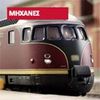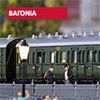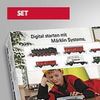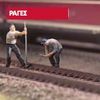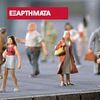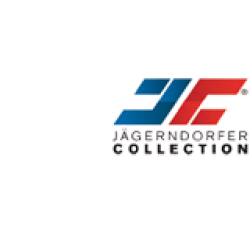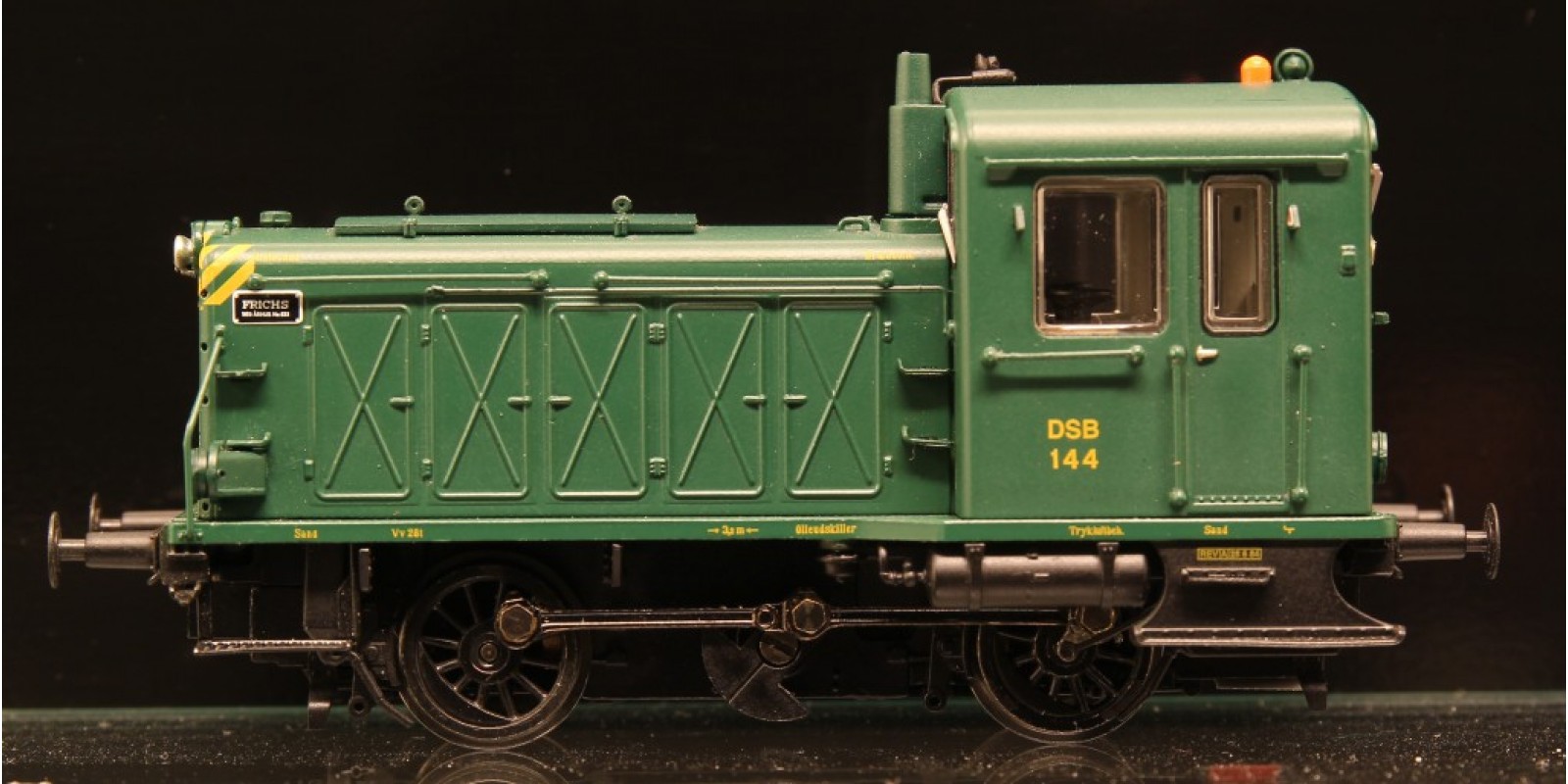In addition to the 16 German Ardelt tractors delivered in 1951-1954, Frichs in Aarhus in 1955 delivered ten similar tractors, which despite their Danish origins were commonly called "Ardelt tractors".
The Danish-built tractors differed markedly from the German ones, they were longer, had a larger cab with a completely different shape, and a completely different engine box.
The ten tractors were given the numbers 117-126, and were followed in 1958 by another twenty largely similar tractors, also supplied by Frichs.
The last series got the numbers 127-146, and had a different type of doors, just as the back of the cab also looked different.
The 30 Frichs tractors were all put into operation west of the Great Belt, and they remained there for the rest of their lives.
Like the German Ardelt tractors, they replaced i.a. The Hs locomotives, and they thus came to serve at a large number of larger and smaller stations in Jutland and on Funen.
The tractors actually belonged to the machine depot in Aarhus, where major inspections and repairs were carried out, but from here the tractors were exchanged with the depots in Struer, Aalborg, Fredericia, Padborg and Odense, from where the tractors were again distributed to the stations that sorted under these depots.
For example, the machine depot in Struer in 1966 had seven of these tractors, which in turn were distributed as follows: Skive, Thisted, Holstebro, Herning, Skjern, Ringkøbing and then one as a reserve in Struer. The tractors were then exchanged to Struer for minor overhauls, and from here to Århus for major overhauls or repairs.
A scan from Struer Maskindepot's machine protocol for a random month in 1966 can be seen here .
It appears that the tractors are listed under the name "AT", even though they are Danish tractors.
In addition to the depot in Struer, it was the depot in Padborg that had most of these tractors attached, from here tractors were delivered to Tønder, Tinglev, Vojens and Sønderborg.
The tractors in Langå, Viborg, Silkeborg and Horsens were exchanged directly from the machine depot in Aarhus.
Exchanges between the depots could either take place in ordinary freight trains, or as special trains, typically pulled by an MO or an MT.
The tractors were also used for easier line travel from certain stations, for example the tractor in Horsens drove daily to Hedensted and exchanged wagons, and the freight line Vojens-Haderslev was also for a number of years operated by the Frichs tractor from Vojens.
In 1982, Frich's tractors 129 and 123 were scrapped as the first, 129 burned at the depot fire in Struer on 7 November 1981, and 123 had close contact with MX 1028 in Herning on 25 August 1982, own photo of 123 after the accident can be seen here .
This was clearly before the smoking ban came into force, and also before orange vests became the highest fashion among DSB employees, regardless of title.
From the mid-eighties, the tractors were phased out gradually, the last revisions were carried out in 1987, and from approx. In 1989, the use of the tractors ceased, with Viborg, Vojens and Hobro among the last stations at which they were used.
Some of the tractors were cut up either in Bjerringbro or on the filling track in Aarhus, but relatively many survived at various railway clubs, and a few at larger companies.
The Frichs tractors were green all their lives, but a few had the original literations with shade and crown replaced with yellow helvetica letters and numbers.
The models
Metal undercarriage and two-part upper also in metal.
Richly detailed cab interior, and light in cab.
Etched steps and front grilles in stainless steel, all handrails and wipers also made of metal.
Resilient buffers, stainless steel connecting rods and balanced front axle.
AC or DC wheels depending on the version, and acting flashes on the roof, on the versions fitted with it.
Triangle and shunting lights both front and rear.
ESU glockanker motor, powercap and built-in speaker.
Variants, numbers and status
Like the German Ardelt tractors, the Danish ones were also visually changed at several points during the approx. 35 years they were in operation.
In the early sixties, they got painted yellow front markings, and there were several different versions of these markings.
In the mid-seventies, they had the fixed lights replaced with "loose" lights, and around 1977-78 they had orange flashes mounted on the roof.
The central workshop in Aarhus, which audited the Frichs tractors, in contrast to its colleagues in Copenhagen, always painted the revision date on the beam when the tractors had been audited.
These dates are also stated on the models, and the dates used are the dates that were actually stated on the tractors in question.
The dates are also exactly the same as on the tractors, either in thin type and slash between date and month, in helvetica font without frame, or in helvetica font in frame.
Four different variants are published, which largely cover the entire active period of the tractors, ie from 1958 to approx. 1989.
Green, yellow helvetica inscriptions on cab, front markings and turn signals on roof

